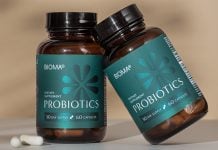
How Good is Quinoa for You?
Unless you’ve been living under a rock for the past 10 years then you’ve heard of the ultimate superfood quinoa. Although you may not be able to say it properly, you’ve heard it’s good for you. Our guest author breaks down in detail why exactly it could be the ultimate superfood!
Ultimate Superfood: Eat more quinoa?
For centuries we’ve eaten the wrong kind of food staple. Rice, wheat, corn, potatoes—all pale in comparison to the completeness of this obscure type of grain.
With a nutritional value next to nothing, quinoa has seen explosive demand in recent years, and it should be well on its way to your plate.
What is quinoa?
Quinoa (pronounced KEEN-wah) refers to the seed of Chenopodium quinoa, a plant native to the lofty heights of the Andes. Contrary to popular thought, quinoa is technically not a cereal grain. It has more in keeping with beets, spinach, and chard than rice and wheat [Editor’s Note: you learn something new every day!].
The plant grows up to two meters tall and can survive in altitudes of almost 4,000 meters. It’s a very hardy species, adaptable to arid environments, low temperatures, high salinity, and other extreme conditions.

Of the approximately 120 identified varieties of quinoa, the most commoditized include the white, red, and black quinoa. In Bolivia, you can find what is arguably the finest variety of them all: quinoa real.
It is a very versatile food that goes perfectly with any dish. You can use it in lieu of rice, for instance. It can be used to make everything from pancakes and pilafs to pizza crusts, in addition to a myriad of desserts, salads, and soups.
Quinoa flour is an ingredient in various bread, biscuits, and other processed products, while starch made from quinoa has become an industrial favorite. Quinoa recipes are much in demand nowadays.
The World Bank estimates that the increase in demand for quinoa has outpaced that for any other food. In light of this newfound demand, many countries outside South America are on a mad scramble to produce quinoa.
Canada, Denmark, Italy, India, Morocco, Netherlands, and the UAE are just among many nations now in various stages of quinoa production.
Still, the center of the industry is in Bolivia and Peru, and the two countries are involved in a bitter rivalry over quinoa supremacy.
Incas were the first to discover the nourishing utility of the quinoa plant as early as three millennia ago. To them, it was the ‘mother seed,’ a germ of divine provenance.
It was not until the 1950s when quinoa sparked renewed interest. In the study “Nutritive Values of Crops, Nutrient Content and Protein Quality of Quinoa and Cañihua, Edible Seed Products of the Andes Mountains,” the researchers wrote that quinoa “comes as close as any other” organism to giving “all the essential life-sustaining nutrients.”
By the early 1990s, NASA nutritionists were mulling the provision of quinoa to astronauts in space.
As mounting evidence points to quinoa as a palliative to malnutrition, the UN World Food Programme declared 2013 as the International Year of Quinoa, and the media has not left it alone since.
Quinoa health benefits
So believe the hype: quinoa is as nutritious as can be.
It contains every single one of the nine essential amino acids, including methionine and lysine, which eludes most kinds of grains.
It is a complete protein, more in league with meat, eggs, and dairy than regular cereals. A hundred grams of uncooked quinoa supply 14 to 16g of protein, plus 6g of healthy fats and none of the cholesterol. As such, it can effectively address the amino acid deficits experienced by many vegans and vegetarians, especially bodybuilders.
Quinoa is a great grain substitute for sufferers of Celiac disease, which forbids persons from consuming staples like wheat and barley.
It is free of gluten, the inauspicious protein that leads to an assortment of digestive disorders and nutritive deficiencies in Celiac disease patients.
In terms of dietary fiber content, quinoa also comes out tops. A hundred grams of uncooked quinoa may contain anywhere from 7 to 16g of fiber. Such a high amount of fiber leaves you feeling full longer, preventing binge-eating.
The same amount of quinoa may also contain around 64g of carbohydrates. Though rich in carbs, quinoa has a glycemic index of just 53.
For a ‘grain,’ it is affluent in vitamins and minerals, namely folate, folic acid, iron, riboflavin, magnesium, thiamine, and zinc. One hundred grams of uncooked quinoa may contain 563mg of potassium, more than any other grain.
In addition, quinoa is bursting at the husk, so to speak, with flavonoids like quercetin and kaempferol. These are antioxidants linked to properties that prevent cancer, viruses, depression, and inflammation. It is said to have more antioxidants than ordinary cereals.
How to prepare quinoa

It cannot be emphasized enough: for quinoa to taste right, it has to be washed and rinsed thoroughly before cooking. Dry, uncooked quinoa may be coated with saponins, which gives it a characteristic bitter taste. Get rid of the saponins by rinsing quinoa until the water is cloudy no more.
Most quinoa on the market today are already pre-rinsed, but always assume that they aren’t. Soaking it diminishes the presence of phytic acid, a compound that impedes mineral absorption.
Quinoa cooks up faster than rice. Prepare it like you would pasta, by boiling in a large pot. It grows tender after just 10 to 20 minutes of simmering. You can buy quinoa in health food shops or in the rice aisle of your local grocer.
Wrap-Up
Maybe it’s time to give this ultimate superfood a try and add it to your weekly diet?
From the amazing health benefits to the economical price, quinoa does add up to an ultimate superfood!
- The Ultimate Quinoa Superfoods - February 27, 2015


